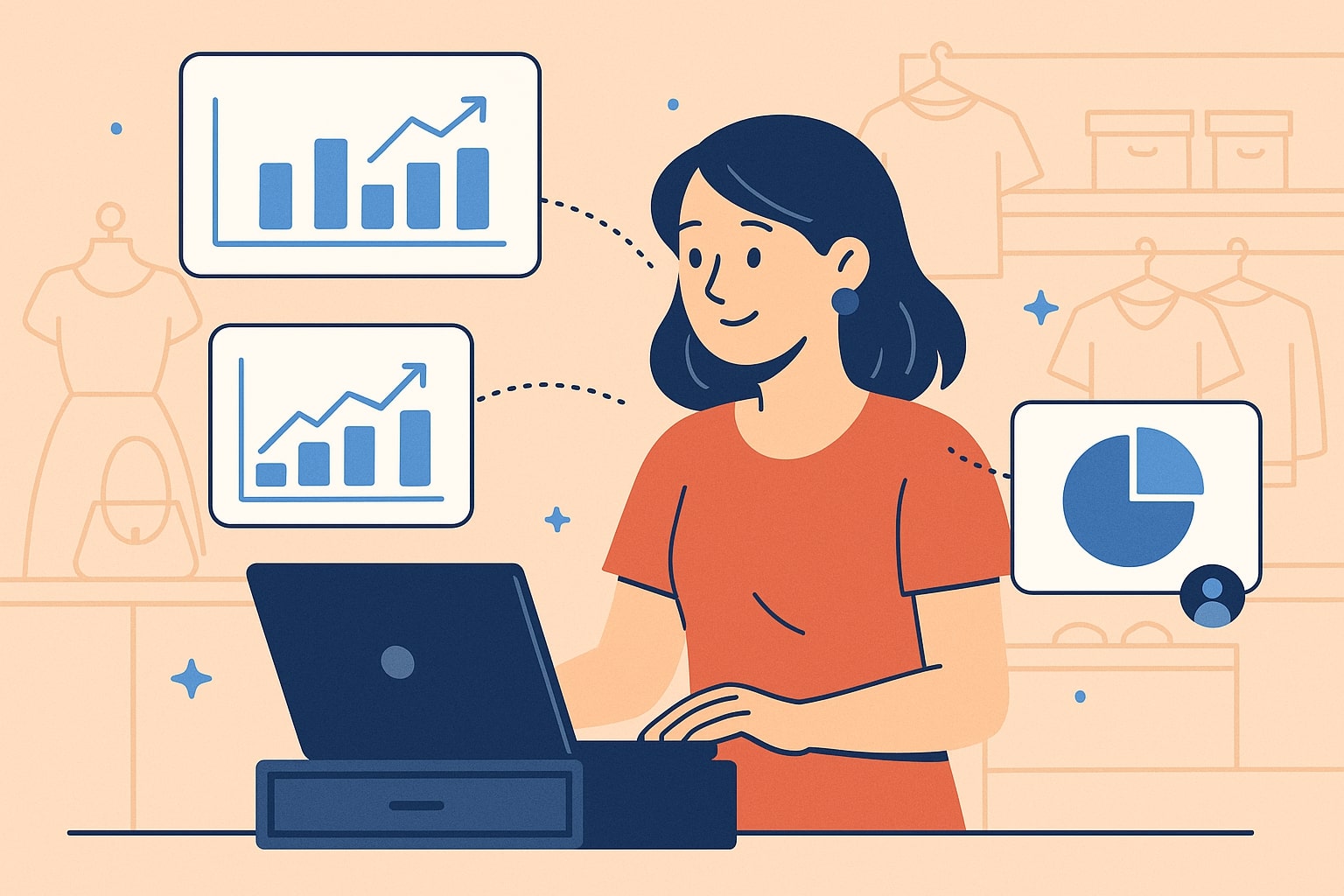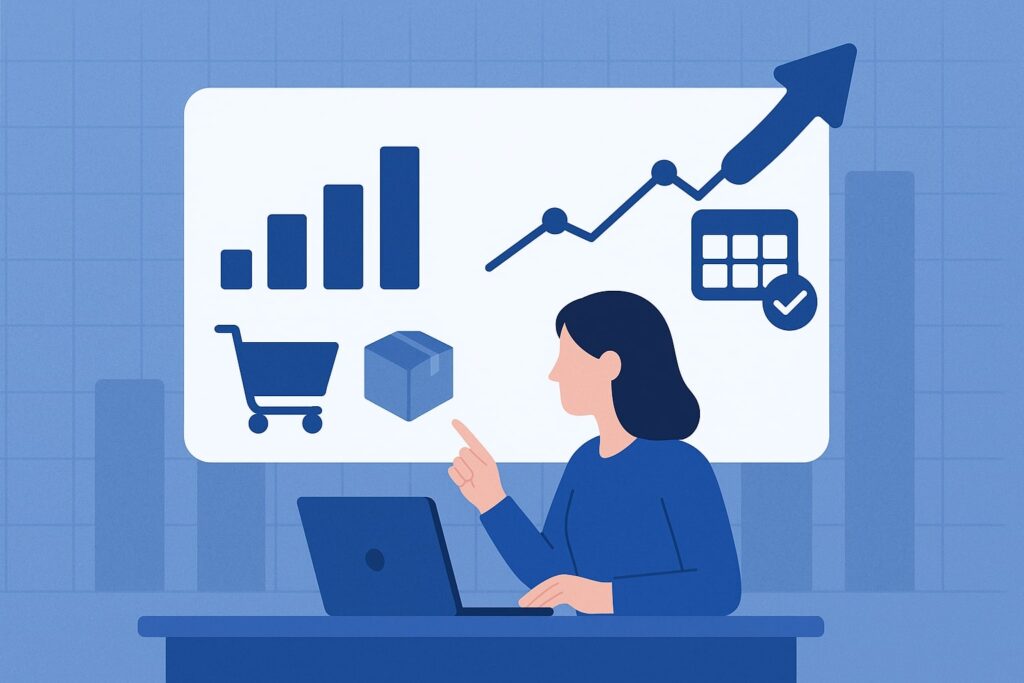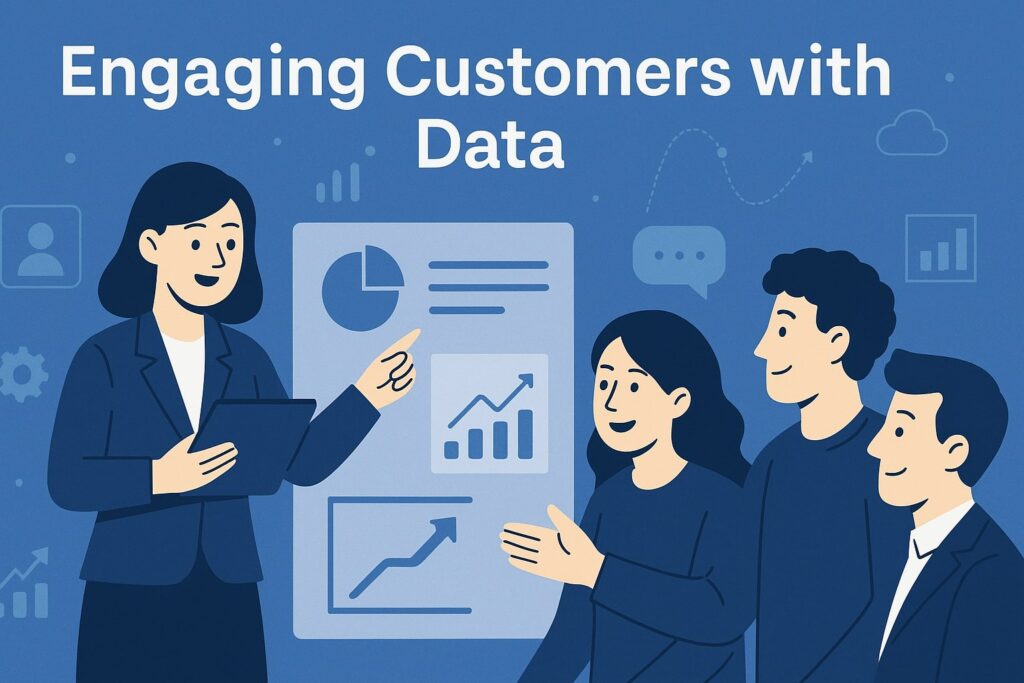
By consignmentpos September 13, 2025
Point-of-sale (POS) systems in consignment stores collect a wealth of data on every transaction—sales revenue, inventory movement, customer details, and consignor activity. By analyzing this data, store owners gain clear insights into which items and categories are popular, customer buying patterns, and operational efficiency.
Rather than relying on guesswork, data-driven decisions based on POS reports (sales trends, inventory levels, customer demographics, etc.) can inform better pricing, stocking, and marketing strategies. Ultimately, leveraging POS data leads to higher profits and better store performance over time.
A consignment POS differs from a standard retail POS by including features tailored to stores that handle many suppliers. Key features often include consignor tracking (identifying who supplied each item) and automated commission calculations, so you can easily pay sellers their share.
Robust inventory management is essential: a good POS updates stock in real time (even across multiple locations or online channels) and flags unsold or returnable items. Flexible pricing tools (such as markdowns or seasonal adjustments) help move slow items and optimize profits.
Customer management features (profiles and loyalty programs) let you record buyer preferences and reward repeat shoppers. Modern consignment POS platforms also offer integrations with e-commerce and marketing tools (Facebook Shops, email systems) and accounting software.
Mobile/tablet support and contactless payments further speed up service and match customer expectations. In short, the right POS system not only processes sales but also captures the data and provides the tools you need to analyze it.
- Consignor & Commission Management: Track each item by consignor and automate payouts, reducing manual errors. Clear consignor statements foster trust and repeat business.
- Real-Time Inventory Tracking: See stock counts update live across your store(s) and online. Avoid double-selling and always know what’s in stock.
- Returns & Unsold Items: Handle returns or unsold inventory smoothly by monitoring items due back to consignors.
- Dynamic Pricing: Quickly adjust prices based on demand and season. Flexible markdowns help move slow items and keep inventory fresh.
- Customer Profiles & Loyalty: Create customer accounts to log purchase history and preferences. Implement loyalty programs so repeat shoppers earn rewards or early-access offers.
- Reporting & Analytics: Generate reports on sales, inventory, and consignor performance. For example, track daily revenue or sales by category to spot trends (see table below).
- Integrations: Sync your POS with online marketplaces, email marketing tools, and accounting software for unified operations.
- Cloud & Mobile: Use cloud-based POS for remote access and multi-store management. Tablet/mobile checkout options help your team serve customers anywhere on the floor.
- AI Pricing (Optional): Some platforms offer AI-driven pricing assistants that analyze market trends and suggest optimal price tags to sell items faster.
Consignment POS features support seamless in-store service (for example, staff using a mobile POS device) while capturing data on inventory and sales.
With these features in place, your POS system continuously generates valuable data. The next step is to use that data to boost sales and engage shoppers.
Leveraging Sales and Inventory Data

Your POS will collect sales and inventory data by default. Smart analysis of these figures lets you focus resources on what works and fix what doesn’t. Start by pulling key reports from your POS:
- Sales Performance Reports: Track total revenue, average sale, and breakdown by product category. This tells you which products or brands are your biggest revenue drivers.
For example, if jackets consistently sell out, you might allocate more shelf space to them or raise prices. Regularly reviewing sales by category and growth rates (weekly or monthly) helps align pricing and merchandising with customer demand. - Inventory Turnover Reports: Measure how often you sell through your stock (e.g. annual turnover rate). A high turnover rate (often 3–5+ times per year) means goods move quickly; a low rate indicates slow sellers. Use this data to avoid overstocking unpopular items or running out of hot sellers.
Reports on days inventory outstanding or category-level turnover show exactly which items linger too long. For instance, if a batch of home décor items isn’t selling, the data will flag the issue so you can discount or bundle them. - Sell-Through Rate: This metric (percentage of starting inventory sold during a period) highlights pricing effectiveness. A sell-through of 60–70% is generally healthy for consignment.
Below that, consider markdowns or promotions to clear stagnant stock. Simple adjustments like bundling slow-moving items or featuring them in special sales events can boost this rate. - Shrinkage Monitoring: Track inventory loss due to theft, damage or errors. Even small leaks hurt profit. If your POS shows unusually low inventory counts (shrinkage report), increase security or audit procedures to plug leaks.
Combining sales and inventory insights gives a full picture. For example, a Sales vs. Turnover chart can show that while a certain category has high revenue, its turnover is low – suggesting you might have too much stock sitting unsold.
Conversely, high turnover with low revenue might indicate an opportunity to raise prices slightly. Regularly examining these cross-reports ensures your stock matches demand.
Here’s a summary table of essential consignment store reports and metrics:
| Report/Metric | What It Measures | Why It Matters |
|---|---|---|
| Sales Performance | Total sales, average transaction value, and sales by category. | Identifies top-selling products and price points. Informs pricing and space allocation. |
| Inventory Turnover | How often inventory is sold and replaced (turnover ratio). | Reveals slow-moving vs fast-moving stock. Helps balance inventory levels and avoid overstock. |
| Sell-Through Rate | % of inventory sold in a given period. | Shows how effectively items sell. Low rates suggest need for discounts or promotions. |
| Active Consignors | Number of consignors regularly supplying inventory. | More active consignors means wider product variety; a drop may signal issues with consignor retention. |
| Shrinkage | Inventory lost to theft, damage or error. | Highlights product losses. Identifying shrinkage helps implement controls to protect profit. |
| Customer Traffic | Foot traffic count and conversion rate. | Shows store visit trends and how many visitors purchase. Guides staffing and promotional timing. |
By tracking these reports regularly (daily, weekly or monthly as appropriate), you can spot trends and respond quickly.
For example, consistently low sell-through might prompt a weekly promotion on slow items, while high traffic hours from the customer traffic report could mean extending staff or special offers at those times.
Engaging Customers with Data

A consignment store’s customers value personal attention. Use your POS data to deepen customer relationships and encourage loyalty.
- Build Detailed Customer Profiles: When customers check out, capture their contact info, purchase history, and preferences in the POS (or linked CRM). Over time, this shows who your best customers are and what they like.
For example, the system might reveal that a customer frequently buys boho clothing or vintage furniture. Armed with this insight, you can suggest relevant items when they visit or reach out with personalized recommendations. - Implement a Loyalty Program: A POS-integrated loyalty system lets you reward repeat visits with points, discounts, or perks. Customers earn rewards on each purchase, giving them incentive to return.
The POS can automatically track and apply loyalty points at checkout. A loyalty database also gives you permission to email these customers about upcoming sales or new arrivals, keeping them engaged. According to industry experts, offering special discounts or early access to loyal customers significantly boosts retention. - Targeted Marketing Campaigns: Use POS data (like customer addresses or age demographics) to focus your marketing. For example, analyze your customer list to see which ZIP codes have few customers, then run Facebook or local ads in those areas to find new shoppers.
If most of your clientele are Millennials or Gen Z, use social commerce channels: set up Instagram or Facebook Shops synced with your POS inventory. Data shows younger shoppers love buying resale goods online, so an easy social storefront can expand your reach.
Email and SMS campaigns are also powerful: send newsletters or special offers to customers in your POS database. An email blast like “Refer a Friend and Both Get 50% Off” leverages word-of-mouth and brings in new customers. - Personalized In-Store Experience: Train staff to use customer data at checkout. For example, if the POS flags a repeat customer, the cashier can greet them by name or remind them of their preferred brands.
Small gestures like these make shoppers feel valued. The POS can also prompt upsell suggestions (“Customers who bought X also liked Y”), increasing average order value. Over time, you’ll build a segment of VIP customers.
Invite them to exclusive events or private sales (tracked through the POS), which enhances loyalty and makes them brand advocates. - Omni-Channel Integration: Integrating your POS with online channels means every sale (in-store or online) updates one system. This unified inventory prevents stockouts and allows customers to order online and pick up in-store (BOPIS), blending convenience with personal touch.
Many POS platforms support syncing with e-commerce marketplaces (Shopify, eBay, Amazon) so your products get in front of more buyers.
Selling through social media “shops” or a branded mobile app turns your inventory into a multi-platform experience. More touchpoints mean more opportunities to engage customers and drive sales.
Using data effectively means acting on what it tells you. If a segment of your customers hasn’t shopped in a while, your POS can identify them by the last purchase date. A re-engagement email with a special offer can bring them back.
If sales dip in a certain category, try running a targeted promotion on those items. By continuously testing ideas and checking the outcomes in your POS reports, you create a feedback loop that keeps improving both sales and customer satisfaction.
Engaging Customers with Data

Putting POS data to work can reveal creative ways to boost revenue:
- Bundling & Upselling: If the POS shows low sales volume for a set of accessories, bundle them (e.g. scarf + hat) or offer a discount when bought together.
Upselling works too; train staff to suggest complementary items at checkout. ConsignCloud experts suggest these techniques to raise the average order value. - Seasonal Promotions: Use historical sales data to plan around holidays and seasons. The POS can highlight past seasonal spikes (e.g. furniture selling well in spring) so you stock accordingly. Plan clearance events for the end of a season based on slow-moving inventory flagged in your POS.
- Dynamic Pricing: Respond quickly to market trends. For example, if fast-fashion consignors are overstocked according to your POS, consider a flash sale on those items. Conversely, raise prices on hot-selling designer pieces. Some systems even offer AI recommendations for pricing to maximize profit.
- Optimize Store Layout: Tie POS data to your store plan. If the Sales by Category report shows certain brands or categories doing well, place them in prominent locations.
Move slower brands to clearance or near registers as impulse buys. Over time, rearranging merchandise based on actual sales data can lift overall performance. - Inventory Forecasting: Advanced POS analytics (or add-on apps) can forecast demand. By analyzing trends, you can pre-order trending brands or styles.
This helps reduce stockouts of popular items and avoids overbuying what won’t sell. According to retail tech experts, leveraging big-data analytics allows retailers to anticipate demand and optimize inventory levels before peaks arrive.
Combining these tactics makes each marketing or merchandising effort backed by evidence rather than guesswork. Over time, small data-driven improvements compound into significant sales growth and deeper customer loyalty.
Best Practices for Using POS Data
- Consistent Reporting Schedule: Set a routine (daily for cash flow, weekly for inventory, monthly for overall trends) to review POS reports.
Frequent checks help you spot issues early (e.g. a sudden inventory shortfall). For instance, the Sales Performance Report should be reviewed monthly at minimum. - Maintain Data Quality: Ensure every item is correctly entered and scanned at intake. Accurate tagging (SKU, price, consignor) yields reliable reports. Regular cycle counts reconcile on-hand inventory with POS records, keeping shrinkage in check.
- Train Your Team: All staff should understand how to use the POS properly and why data matters. Train cashiers to ask for customer emails or phone numbers politely, and explain to consignors how the system tracks their sales. Staff buy-in makes the data richer.
- Centralize Data with Cloud POS: Use a cloud-based POS for automated backups and remote access. This ensures no data is lost to hardware failure, and management can analyze reports from anywhere. Multi-location stores especially benefit from real-time sync in the cloud.
- Integrate Your Systems: Link your POS to accounting (e.g. QuickBooks), email marketing, and CRM platforms. This reduces manual data entry and avoids errors. For example, sales data should flow into your accounting system automatically, saving time and keeping books accurate.
- Respect Privacy: When collecting customer data, be transparent about how you’ll use it (for receipts, loyalty, marketing). Follow data protection guidelines, so customers trust you with their information. An up-to-date, trustworthy approach builds loyalty.
FAQs
Q.1: What is consignment POS data?
Answer: A consignment POS system captures sales data (revenue, items sold), inventory levels, consignor details (who provided each item and what commission is due), and customer information (contacts, purchase history).
It differs from regular retail POS by linking items to multiple sellers. All these data points can be reported and analyzed to improve store performance.
Q.2: How can POS data increase sales?
Answer: By revealing trends and opportunities. For example, if sales reports show a category outperforms others, you might stock more of it or move it to a prime location.
If inventory turnover is low for certain items, you can run targeted promotions or bundles to clear space. POS data also helps measure the impact of marketing (e.g. did a Facebook ad campaign increase foot traffic or not) so you invest wisely.
Q.3: How do I engage customers with POS data?
Answer: Use the data to personalize and reward. Build customer profiles in your POS (name, purchase history, preferences) and segment them by demographics or behavior.
Then send targeted emails/SMS (announcing sales on items they like or referral deals) using the collected contact info. Implement a loyalty program in your POS so shoppers earn points or discounts automatically. These tactics make customers feel valued and keep them coming back.
Q.4: What features should a consignment POS have?
Answer: Look for consignor management (tracking who owns what item), automated payout calculations, and easy returns processing.
It should update inventory in real-time and offer flexible pricing tools. Customer management (profiles/loyalty) and robust reporting (sales, inventory, consignor reports) are essential. Also ensure it integrates with e-commerce, marketing, and accounting systems.
Q.5: Is cloud-based POS better for consignment stores?
Answer: Generally yes. Cloud POS systems let you access sales and inventory data from anywhere, which is great if you have multiple locations or need after-hours access. They sync updates instantly across devices, preventing errors like double-selling.
Cloud vendors also automatically back up your data and push out updates (including security fixes) without manual effort. For most consignment retailers today, a cloud solution offers the flexibility and reliability needed for growth.
Conclusion
Consignment stores generate rich data at every sale. By harnessing your POS data, you can transform those raw numbers into smarter merchandising, precise marketing, and superior customer experiences.
Detailed sales reports reveal which consignor items to prioritize. Inventory analytics alert you to stock imbalances or shrinkage. Customer profiles and loyalty tracking let you reward repeat shoppers and personalize outreach.
In a competitive resale market, stores that make data-driven decisions gain a clear edge. With each insight from your POS, you’ll optimize operations, boost sales, and strengthen relationships with both consignors and customers.